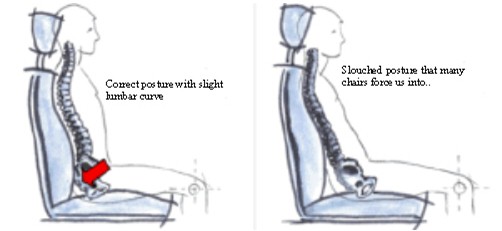Is Cross Stitch Becoming A Pain in the Neck?
ByJessie Mackay (B.Phty, Physiotherapy Board of Australia).
Our bodies may not be adapted to sit still for long periods of time crafting or at the computer. The most commonly affected areas for aches and pains are the back, neck, shoulder, wrists and hands.
Early symptoms include niggling, dull aches or discomfort that initially can be relieved by short breaks.
If ignored, these aches and pains can become more persistent and can change into:
* tenderness or burning sensations
* shooting pains
* numbness and tingling
* pins and needles
* painful or reduced grip
* swelling
* muscle spasms
(If you are experiencing these symptoms persistently and they are not relieved with rest, simple stretching, massage, heat packs or over the counter pain relievers; contact your local Health Care Professional).
Tips to Prevent Aches and Pains:
· Take Mini-Breaks. Stop regularly and move. These breaks should occur every 20-30 minutes and last for 2-5 minutes: Put a load of laundry on; Make a cup of tea; Just get up and do something so that your position is altered and blood is allowed to flow freely to all your muscles and organs. Mini breaks can not only decrease pain, they can increase your concentration, alertness, and productivity – and decrease the mistakes in your work!
· Stretch In Your Chair. Here’s a simple stretching program you can do. When? As often as you think of it!
1. Sit up straight with your head up, shoulders back and a small curve in your lumbar (lower) back.
2. Take 3 large deep breaths.
3. Slowly turn your neck left and right, looking over your shoulder. Repeat 3 times each side
4. Roll your shoulders forwards and backwards 5 times.
5. Interlock your fingers in front of you, raise your arms to shoulder height and push your hands away from you. Hold for 3 seconds. Repeat 3 times.
6. With your hands on your knees, slide your hands down your legs as far as you can go. Hold for 3 seconds. Repeat 3 times.
7. Arrange your hands into the prayer position; push hands together and repeat in reverse prayer position. Repeat 3 times.
8. Clench and open hands quickly 5 times.
· Avoid crossing your legs. Keep your feet flat on the floor and use a foot stool if necessary.
· Sit tall, with a slight curve in your lumbar spine, your chest lifted, shoulders relaxed, chin tucked, neck straight and relaxed. Your head and shoulders should be stacked on top of your pelvis and hips. .

|
| Image by Big G Fish |
· A small lumbar support placed in the small of your back can encourage good posture by encouraging your pelvis into a slight anterior pelvic tilt so your postural muscles are more active. (An inexpensive option is rolling up a small towel, and securing the roll with tape then placing this in the “small” of your back.)
· Have your work close and supported on a desk in front of you. Consider a lap table to bring your work closer.
· Adequate lighting. The more natural light the better. If you don’t have natural light, have light coming from all directions. You can buy “daylight” lamps relatively inexpensively. If you can’t see your work well, your posture will suffer as you squint and lean to catch the light.
· Get regular exercise. Stitching is relaxing and enjoyable, but only if it is pain-free. Try to exercise each day– even if this means parking in the far corner of the lot. When not sitting at your hobby; MOVE!
· Use gadgets. Tools such as needle threaders, daylight lamps, magnifying glasses, thimbles, frames and floor stands all help to minimize muscular tension and therefore aches and pains. If you plan to do a lot of stitching, research which tools might assist you and relieve some of the strain.

